Tag Archives: Maryland
Hello Mayors: FOIA Emails Suggest US Wind Requested Coastal Towns Keep Initial Offshore Wind Talks Private
 New light is being shed on offshore wind company US Wind’s talks with the mayors comprising the Association of Coastal Towns (ACT) with the release of email correspondence between the two. US Wind and the ACT have been in talks over US Wind’s proposed offshore projects off the coast of Maryland that would potentially see a power cable landing in Delaware Seashore State Park. US Wind has also presented community benefits packages to the Coastal Towns which include proposed annual payments over twenty years worth $2 million to each town. Following a Freedom of Information Act request (FOIA) submitted to the ACT, WBOC has received copies of the emails between ACT and US Wind that suggest the offshore wind company’s desire to keep the initial discussions shielded from the public. more, >>CLICK TO READ<< 08:55
New light is being shed on offshore wind company US Wind’s talks with the mayors comprising the Association of Coastal Towns (ACT) with the release of email correspondence between the two. US Wind and the ACT have been in talks over US Wind’s proposed offshore projects off the coast of Maryland that would potentially see a power cable landing in Delaware Seashore State Park. US Wind has also presented community benefits packages to the Coastal Towns which include proposed annual payments over twenty years worth $2 million to each town. Following a Freedom of Information Act request (FOIA) submitted to the ACT, WBOC has received copies of the emails between ACT and US Wind that suggest the offshore wind company’s desire to keep the initial discussions shielded from the public. more, >>CLICK TO READ<< 08:55
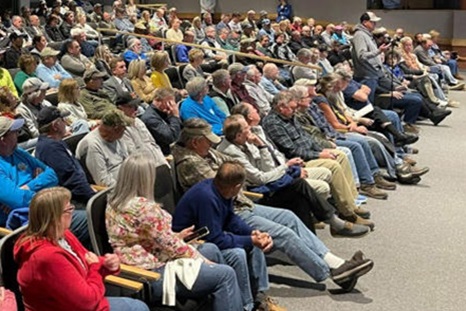
Andy Harris, Ocean City mayor voice new opposition to West OC pier plan
Wednesday, Rep. Andy Harris, R-Md-1st, Ocean City Mayor Rick Meehan and Maryland lawmakers from the Eastern Shore delegation called on the Maryland Department of Environment to hold a public hearing in Ocean City to review its process for U.S. Wind’s planned pier in West Ocean City. The department already held a public comment hearing at the Wor-Wic Community College on March 25, but Harris and others are calling for another following “numerous complaints” received by his office that the hearing was held in Wicomico County as opposed to Ocean City where residents will be most affected by the pier development. “The West Ocean City pier is being developed with the purpose of expanding offshore wind at a time when the true impacts of offshore wind have never been properly studied,” Harris wrote. more, >>CLICK TO READ<< 07:57
Commercial Fishermen Remain Worried About Proposed Plans from US Wind
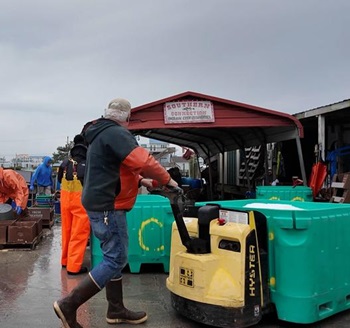 Proposed plans for the West Ocean City Harbor came into focus on Monday night. Offshore wind company US Wind wants to upgrade the pier in the harbor, and a public hearing on Monday gave neighbors a chance to voice their opinions. One commercial fisherman we spoke with ahead of the public hearing said he’s worried the company’s plans, which are part of a future operations and maintenance facility, could run his industry out of town. “Now US Wind is trying to purchase the other two fish houses we have, so we’ll no longer have anywhere to pack out our fish, nowhere else to get ice,” said Jimmy Hahn. more, >>click to read<< 08:26
Proposed plans for the West Ocean City Harbor came into focus on Monday night. Offshore wind company US Wind wants to upgrade the pier in the harbor, and a public hearing on Monday gave neighbors a chance to voice their opinions. One commercial fisherman we spoke with ahead of the public hearing said he’s worried the company’s plans, which are part of a future operations and maintenance facility, could run his industry out of town. “Now US Wind is trying to purchase the other two fish houses we have, so we’ll no longer have anywhere to pack out our fish, nowhere else to get ice,” said Jimmy Hahn. more, >>click to read<< 08:26
Charles Michael Parker of Cape May Court House, NJ, has passed away
 Born in Ocean City, Maryland to the late Charles A. Parker, Jr. and Charlotte (Hobbs) Parker, Mike spent his early life on the beaches of Ocean City, graduating from Stephen Decatur High School, Berlin, Maryland in 1959. Upon graduation from high school, he enlisted in the United States Navy where he spent six years serving his country in Heavy Attack Squadron Eleven (VAH-11) aboard the USS Franklin D. Roosevelt. After many years of working in the engineering field, Mike returned home to Ocean City, Maryland and joined his father in commercial fishing management at Davis and Lynch Fish Company. In 1980 Mike and his family moved to Cape May, NJ to pursue opportunities at Lund’s Fisheries and later forming Atlantic Cape Fisheries. Switching gears in 1985, Mike and his wife, Gloria acquired the Country Greenery, which they have owned and operated with their family for 40 years. more, >>click to read<< 11:44
Born in Ocean City, Maryland to the late Charles A. Parker, Jr. and Charlotte (Hobbs) Parker, Mike spent his early life on the beaches of Ocean City, graduating from Stephen Decatur High School, Berlin, Maryland in 1959. Upon graduation from high school, he enlisted in the United States Navy where he spent six years serving his country in Heavy Attack Squadron Eleven (VAH-11) aboard the USS Franklin D. Roosevelt. After many years of working in the engineering field, Mike returned home to Ocean City, Maryland and joined his father in commercial fishing management at Davis and Lynch Fish Company. In 1980 Mike and his family moved to Cape May, NJ to pursue opportunities at Lund’s Fisheries and later forming Atlantic Cape Fisheries. Switching gears in 1985, Mike and his wife, Gloria acquired the Country Greenery, which they have owned and operated with their family for 40 years. more, >>click to read<< 11:44
“Not For Sale”: Ocean City Firmly Rejects US Wind Offer
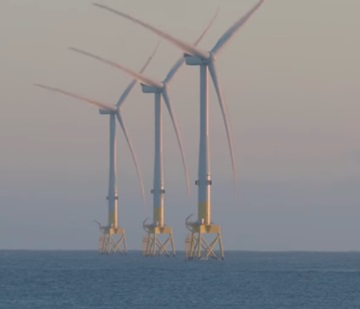 Ocean City officials have issued a resounding public rejection of offshore wind company US Wind’s Community Benefits Package offer. The Community Benefits Package, which was extended to various Delaware Coastal Towns as well, included up to $2 million disbursements to communities over a 20-year period. According to Ocean City, in exchange for the commitment, US Wind expects local government officials to refrain from commenting negatively or objecting to US Wind’s offshore project. Ocean City Mayor Rick Meehan says US Wind approached him in December with the Community Benefits Package offer. more, >>click to read<< 12:53
Ocean City officials have issued a resounding public rejection of offshore wind company US Wind’s Community Benefits Package offer. The Community Benefits Package, which was extended to various Delaware Coastal Towns as well, included up to $2 million disbursements to communities over a 20-year period. According to Ocean City, in exchange for the commitment, US Wind expects local government officials to refrain from commenting negatively or objecting to US Wind’s offshore project. Ocean City Mayor Rick Meehan says US Wind approached him in December with the Community Benefits Package offer. more, >>click to read<< 12:53
Rep. Andy Harris hosts anti-wind hearing in Ocean City ahead of final authorization of US WIND project
 US Representative Andy Harris hosted a hearing in Ocean City Saturday to push back against efforts from US WIND to develop offshore wind power off the coast of Ocean City. Rep. Harris tells 47ABC he is opposed to projects proposed both by Orsted and US WIND, but the event focused on the US WIND plan that is in its final approval stage from the Bureau of Ocean Energy Management (BOEM). “Once you you drive these out, the pilings and you put these windmills up, they’re going to be there a long time,”Rep. Harris said. Ocean City Mayor Rick Meehan says they do not support it the measure moving forward, citing damage to their local industries. “You have the concerns of the commercial fishermen, the recreational fishermen, the environment, environmentalists, there are so many there are so many more questions than answers,” Meehan said. more, >>click to read<< 19:43
US Representative Andy Harris hosted a hearing in Ocean City Saturday to push back against efforts from US WIND to develop offshore wind power off the coast of Ocean City. Rep. Harris tells 47ABC he is opposed to projects proposed both by Orsted and US WIND, but the event focused on the US WIND plan that is in its final approval stage from the Bureau of Ocean Energy Management (BOEM). “Once you you drive these out, the pilings and you put these windmills up, they’re going to be there a long time,”Rep. Harris said. Ocean City Mayor Rick Meehan says they do not support it the measure moving forward, citing damage to their local industries. “You have the concerns of the commercial fishermen, the recreational fishermen, the environment, environmentalists, there are so many there are so many more questions than answers,” Meehan said. more, >>click to read<< 19:43
US Wind Requests Authorization to Cover Possible Harm, Disturbance to Marine Mammals
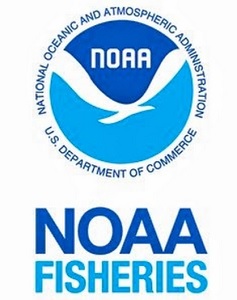 The National Oceanic and Atmospheric Administration (NOAA) Fisheries has announced a request from US Wind, Inc. for a Letter of Authorization that would cover potential negative impacts to small numbers of marine mammals during construction of US Wind’s offshore wind project.US Wind also requested Incidental Take Regulations that would establish how many of a certain marine mammal species’ incidental disruption and possible injury would be permissible during construction. “This regulatory action is part of NOAA’s ongoing work to ensure the nation’s deployment of offshore wind energy is done in a manner that avoids and minimizes impacts on protected resources and their habitats,” NOAA Fisheries said in a social media post Wednesday. more, >>click to read<< 06:38
The National Oceanic and Atmospheric Administration (NOAA) Fisheries has announced a request from US Wind, Inc. for a Letter of Authorization that would cover potential negative impacts to small numbers of marine mammals during construction of US Wind’s offshore wind project.US Wind also requested Incidental Take Regulations that would establish how many of a certain marine mammal species’ incidental disruption and possible injury would be permissible during construction. “This regulatory action is part of NOAA’s ongoing work to ensure the nation’s deployment of offshore wind energy is done in a manner that avoids and minimizes impacts on protected resources and their habitats,” NOAA Fisheries said in a social media post Wednesday. more, >>click to read<< 06:38
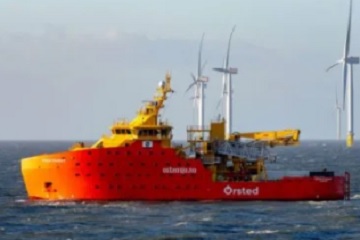
U.S. offshore wind plans are utterly collapsing
Offshore wind developer Ørsted has delayed its New Jersey Ocean Wind 1 project to 2026. Previously, the company had announced construction of the project would begin in October 2023. The delay was attributed to supply chain issues, higher interest rates, and a failure so far to garner enough tax credits from the federal government. For now, they are not walking away from all their U.S. projects but will reconsider long-term plans by the end of this year. Ørsted’s stock price has fallen 30% in 5 days. This is just the latest bad news for offshore win. >>click to read<<10:57
Skipjacks, oysters: The fight for survival of two Chesapeake Bay icons
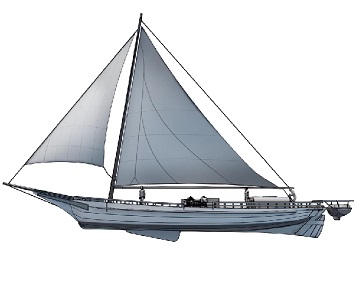 Starting Sunday, oyster enthusiasts will once again be free to pick up their rakes and tongs and harvest Maryland’s signature shellfish delicacy from the floor of the Chesapeake Bay and its tributaries.A month after the season begins, commercial oyster fisherman will take to the water to get their own haul. But one boat will stand out among from the rest: the skipjack, a nimble oyster-dredging sailboat that represents the state’s long maritime tradition. “The oysters are looking better. I’m optimistic,” said Shawn Ridgley, a veteran oysterman and skipjack captain who currently gathers data for the Maryland Department of Natural Resources. A typical skipjack carries a crew of five and can legally harvest 100 bushels of oysters a day. Lately, “boats are catching their limit by 10:00, 10:30 in the morning,” Ridgley said. >>click to read<< 14:05
Starting Sunday, oyster enthusiasts will once again be free to pick up their rakes and tongs and harvest Maryland’s signature shellfish delicacy from the floor of the Chesapeake Bay and its tributaries.A month after the season begins, commercial oyster fisherman will take to the water to get their own haul. But one boat will stand out among from the rest: the skipjack, a nimble oyster-dredging sailboat that represents the state’s long maritime tradition. “The oysters are looking better. I’m optimistic,” said Shawn Ridgley, a veteran oysterman and skipjack captain who currently gathers data for the Maryland Department of Natural Resources. A typical skipjack carries a crew of five and can legally harvest 100 bushels of oysters a day. Lately, “boats are catching their limit by 10:00, 10:30 in the morning,” Ridgley said. >>click to read<< 14:05
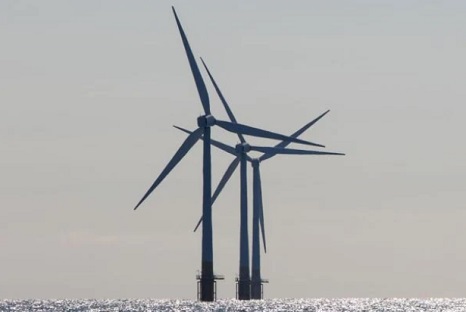
Offshore wind projects may be cancelled in NJ, according to report
Already facing a series of lawsuits and opposition from state and local officials, Danish wind power developer Orsted is reporting huge financial losses. Those losses, company officials warned, could reach $2.3 billion in the U.S and may force the cancellation of projects of the New Jersey coast. In a conference call with investors, Orsted CEO Mads Nipper told them, “If the walk-away scenario is the economical, rational decision for us, then this remains a real scenario for us.” Orsted is considering “walking away” from or cancelling projects in New Jersey, New York, Rhode Island, Connecticut and Maryland. >>click to read<< 08:48
Offshore wind farms pose wildlife threat
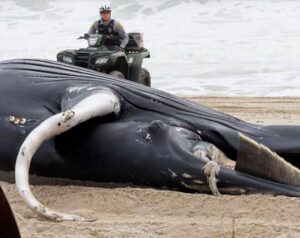 What with all the hype and grand economic plans for wind farming off Maryland’s coast, not one word from the project-movers on consequent harm to the sea’s wildlife, most notably the whales and fish. We are with Ocean City’s mayor and city council in linking the dead whales washed up on the coast with offshore wind harvesting. OC also doesn’t like the prospects for the “viewshed” — turbines visible in the distance. And has anyone considered the possible shift in the path of sharks? Do Maryland vacationers really want the ocean along our shores featuring lots of shark fins? Listen to the audio, or >click to read< By Bruce and Leslea Knauff 15:48
What with all the hype and grand economic plans for wind farming off Maryland’s coast, not one word from the project-movers on consequent harm to the sea’s wildlife, most notably the whales and fish. We are with Ocean City’s mayor and city council in linking the dead whales washed up on the coast with offshore wind harvesting. OC also doesn’t like the prospects for the “viewshed” — turbines visible in the distance. And has anyone considered the possible shift in the path of sharks? Do Maryland vacationers really want the ocean along our shores featuring lots of shark fins? Listen to the audio, or >click to read< By Bruce and Leslea Knauff 15:48
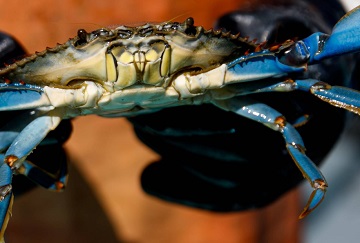
Is the answer to Maryland’s blue crab shortage in Italy?
In Italy, where the blue crab is an invasive species, population numbers are growing quickly and threatening the country’s clam industry, according to a report from Reuters. A local marine biologist told the wire service that invasive “blue crabs” (yes, they really put our beloved crustacean in scare quotes) have eaten up to 90% of young clams in some areas, devastating future production. The leading theory is the crabs were not introduced to Italy’s waters intentionally but arrived in bilge water aboard cargo ships. The region of hit hardest has lots of clam farms, giving the crabs large, dense populations of clams to feast on. Couple that with warmer water, which makes it easier for the crabs to survive the winter, and it “sounds like blue crab paradise,” Colden said. “It’s a perfect Italian vacation spot for the blue crabs in terms of lounging and getting fat and happy,” she said. >click to read< 15:31
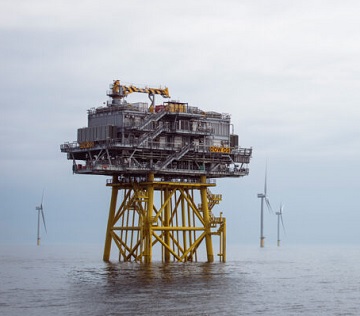
Letter: Informative wind energy resources out there, by Carol Frazier
I just watched a video on YouTube entitled “Bonnie Brady’s Crash Course in Offshore Wind and the Anti-Fishing Lobby”. I don’t recall any of our local news media (other than Mike Bradley of WGMD 92.7 fm) reporting on any of the information and facts contained therein. That said, I have also been made aware of a new fact regarding offshore wind of which people need to be aware. The wind turbines must be regularly “cooled” which is done by drawing ocean water into electrical substations using “once through” cooling systems – these systems are now prohibited in newer power plants because of the devastating effects on aquatic life. The first planned project off our coast calls for 121 turbines and up to four transfer stations. I would suggest everyone read the article “Offshore Wind Electrical Substations: The Secret, Silent Killers” by Jim Lovgren at Fisherynation.com. >click to read the letter< 08:38
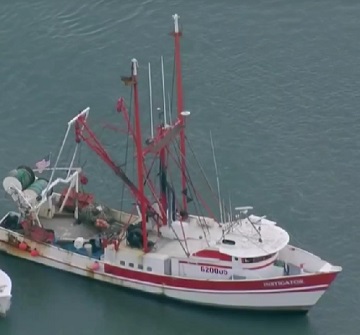
A Call for a More Long-Term Solution to the Shoaling Problem in Ocean City’s Inlet
For commercial fishermen like Mike Coppa, getting through the inlet is not as easy of a task. “In any waterway you’re supposed to be able to come in between them buoys and have water, but right now no, no, no,” said Coppa. “You have to be on top of that red one and almost run it over to find water.” Coppa’s 75-foot fishing vessel, F/V Instigator, ran aground back in March. Since then, he said he and his crew have avoided Maryland all together. “We had to basically change our plans and fish in other states that we had quota, and then we ended up going to New England scalloping all summer,” said Coppa. Video, >click to read< 07:56
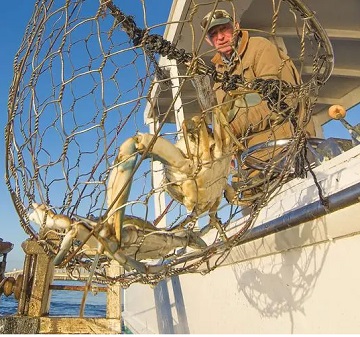
Reins Loosened Slightly On Chesapeake Bay Crab Harvest
“We’re being cautious, but I think we’re being responsible,” said Ed Tankard, a board member with the Virginia Marine Resources Commission, which voted June 27 to ease certain bushel limits. In Maryland, the state Department of Natural Resources announced on the same day a raft of industry-friendly changes to its crab controls, including modestly increasing the allowable harvest of female crabs and lifting limits on the harvest of males over Labor Day weekend. Those moves came a few weeks after the panel that regulates the Potomac River’s fishing industry agreed to roll back bushel limits on female crabs to 2021 levels. >click to read< 12:21
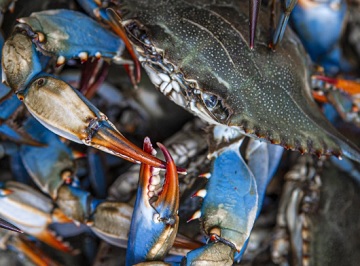
‘99.7% efficient after over 400 hours of use’
Maryland is already famous for its crab, but researchers at the University of Maryland are looking to give that distinction an entirely different meaning. A team of scientists at the school’s Center for Materials Innovation found that crustaceans like crabs and lobsters contain a chemical in their shells called chitin, which can be used to power batteries when combined with zinc. Crustacean shells packed with this chemical are typically thrown out en masse by restaurants that have no other use for them. But researchers believe this waste could serve as a powerful resource in the search for more sustainable batteries. >click to read< 08:11

Proposed Pilot Program For Female Blue Crabs
A new pilot program introduced by the Department of Natural Resources has watermen frustrated. It’s with the possible implementation of plastic, rectangular containers called lugs. Currently, caught male blue crabs are able to be placed in lugs, but females are not. So watermen feel the program comes with a lot of hoops to jump through and they ask why the need for the program at all. Lugs are bigger than your typical bushel basket of crabs. Bushels hold about 40 pounds and lugs hold 60. DNR has introduced the idea of using lugs for female crabs. But with that comes rules that participating watermen (in the pilot program) must follow. >click to read< 12:30
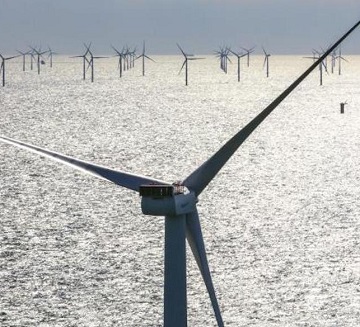
North Carolina Joins Effort to Establish Regional Fisheries Mitigation for Offshore Wind Development
Governor Roy Cooper announced that North Carolina has joined other Atlantic Coast states involved with the Special Initiative on Offshore Wind on a coordinated project to support fisheries mitigation in the development of offshore wind along the East Coast. “It is important that we work to meet our state’s offshore wind energy goals while still protecting our marine fishery industry,” said Governor Cooper. “We are committed to collaborating with other states in this effort to make sure we achieve both goals.” Currently, the Initiative is focused on establishing a framework to compensate commercial and for-hire fishermen in the event of economic impact related to offshore wind development. The goal is to develop a regional approach for administration of any financial compensation paid by developers. Economic impacts from coastal fishing in North Carolina top $4.5 billion annually. >click to read< 08:26
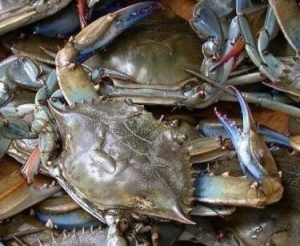
Chesapeake Bay blue crab population improves after all-time low in 2022
This year, the number of spawning age female crabs and adult male crabs both increased substantially, but the number of juvenile crabs only increased by about 15%, according to the winter dredge survey, which is completed from December to March by the Maryland Department of Natural Resources and the Virginia Institute of Marine Science. “We are encouraged by the increases in adult crab abundance, but we need to be vigilant given the ongoing low recruitment numbers,” said Lynn Fegley, acting director for Maryland Department of Natural Resources’s Fishing and Boating Services, in a statement. “We haven’t seen a strong year class since 2019 despite maintaining the spawning stock at a level capable of producing one.” Video, >click to read< 12:56
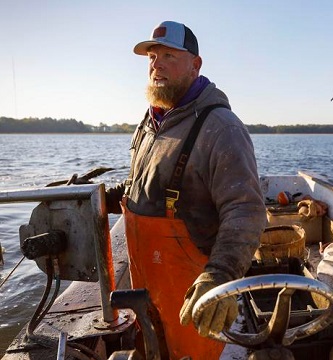
Lowcountry is the last ‘wild west’ for blue crabs. Crabbers call for change.
In February, David Richardson drove to Columbia from his home in Charleston to speak to a room of state senators about his life as a South Carolina crabber, which, at the moment, “is kind of miserable.” But it wasn’t always miserable. Which is why he drove two hours to the Statehouse, a place he had never been nor expected to visit. The crabber thought about wearing a Hawaiian shirt, then thought twice: “I wore a suit, thank God.” As crab numbers fell over the past decade across the Eastern Seaboard, South Carolina did nothing, but North Carolina increased its management actions. It designated some areas as “no-fishing” spawning sanctuaries. And Georgia decided to limit the number of commercial crabbing licenses to under 100. Photos, >click to read< 08:39
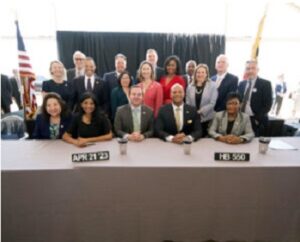
Md. Gov. Signs Offshore Wind Legislation Into Law
Last Friday, Maryland Gov. Wes Moore signed the Promoting Offshore Wind Energy Resources (POWER) Act into law. Joined by representatives of offshore wind energy companies at the Tradepoint Atlantic facility in Sparrows Point, Moore highlighted several bills that will allow Maryland to reach its clean energy goals.” Today I’ve signed legislation to quadruple Maryland’s offshore wind energy goals, reduce greenhouse gas emission in our state, and to provide rebates to businesses that purchase electric vehicles,” he said. “Together we will build on the great work of our partners at Tradepoint Atlantic, Ørsted, and U.S. Wind to build the clean energy future we want to see in Maryland.” >click to read< 14:43

US Navy Sounds Alarm Over Biden’s Offshore Wind Plans
The US Navy and Pentagon are sounding alarms over Biden administration plans to advance offshore wind projects along the central Atlantic US coast, warning that almost all of the new terrain eyed for development conflicts with military operations. Maps shared with industry stakeholders and seen by Bloomberg News show vast red areas that the Navy and Air Force have deemed “highly problematic,” covering prime real estate the Interior Department last year earmarked for leasing off the coasts of North Carolina, Virginia, Maryland and Delaware. The Defense Department’s concerns, which come on top of other conflicts identified by the US Coast Guard, have spooked renewable power developers and US East Coast states counting on mid-Atlantic wind farms to meet clean energy and climate goals. >click to read< 11:18
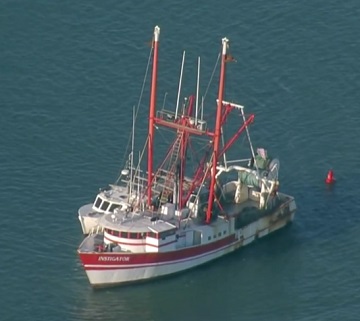
Locals Upset Over Dredging Issues at the Inlet in West Ocean City
On Wednesday morning, a 75-foot commercial vessel ran aground on its approach to the commercial dock in West Ocean City. The captain and crew say if the channel was dredged properly, this would not have happened. They also voiced their frustrations with the Army Corp of Engineers, and there is agreement locally that a more permanent solution is needed. “Maryland keeps wanting to put a band-aid on this, how many band-aids are you going to put on it before you fix the problem?” questioned Mike Coppa. Coppa is the owner of the Fishing Vessel Instigator, the boat stuck in the channel. Video, photos, >click to read< 07:55

Maryland, Virginia race to save dwindling commercial fisheries in the Chesapeake Bay
Alarmed by plummeting stocks of commercial fisheries in the Chesapeake Bay, officials in Maryland and Virginia are scrambling to control invasive fish species that are causing at least part of the problem. On Thursday, Gov. Wes Moore asked the federal government to carry out an evaluation to determine if the situation amounts to a declaration of a “commercial fishery disaster,” which would qualify the state for federal assistance. In a letter to Secretary of Commerce Gina Raimondo, Moore said the state is increasingly concerned about the explosive growth of invasive fish species in the Chesapeake Bay, including blue catfish, flathead catfish and snakehead. >click to read< 09:11






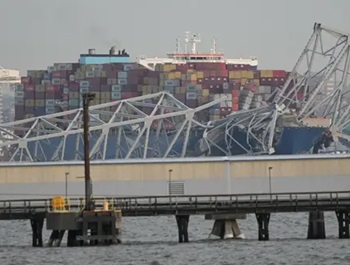
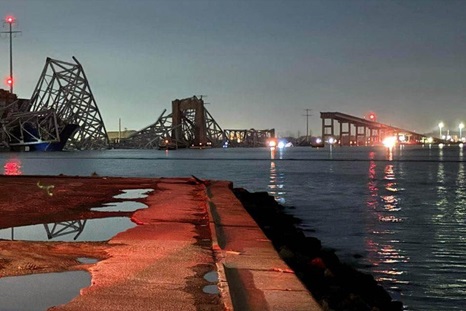
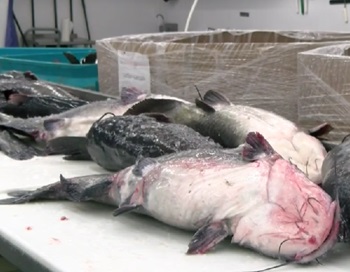
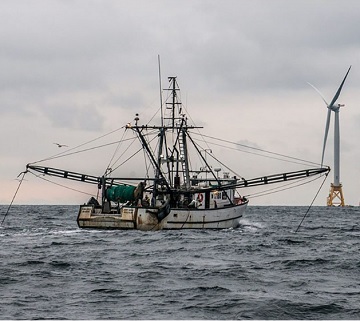
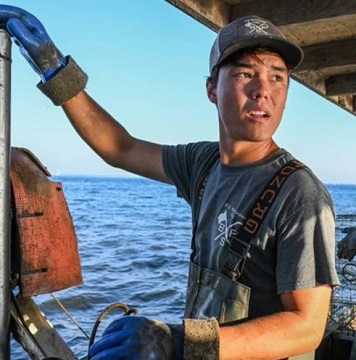



























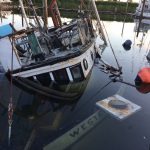
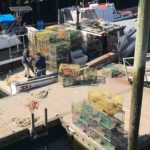


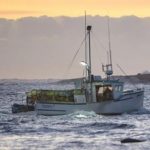
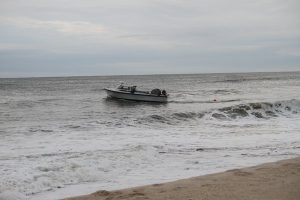

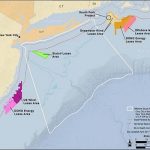
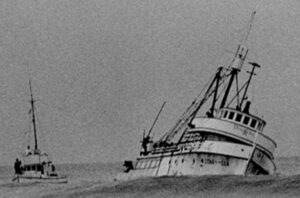
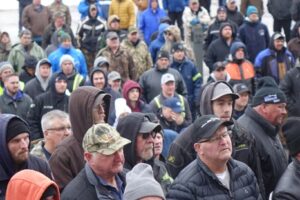
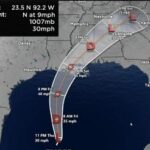





Stevenson: It’s time for public comments on offshore wind
Share this post